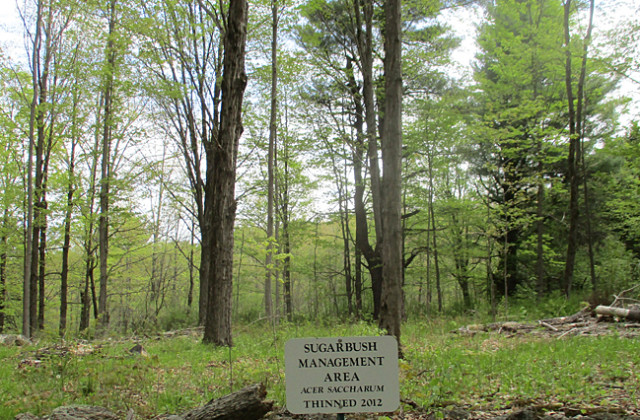Thoughts Along the Chattleton Road at Great Mountain Forest
By Hans M. Carlson
The road at Great Mountain Forest’s (GMF) west gate is a new spur off an older thoroughfare. Jean’s Trail is the intersection, and from there the old Chattleton Road once ran down behind where Rustling Winds Stables is now. It still goes south to Meekertown in the other direction, but a hundred and fifty years ago the road passed through open farmland, not forest. Kneeland Munson had the best land, but Elisha Mansfield, Stephen Dorman, and others all worked hardscrabble farms along the road. The land they cleared, along with all the charcoal made by the residents of Meekertown, left little that you would have called a forest by the end of the nineteenth century.
I’ve covered this history before – that this is a postindustrial landscape, regrown after overuse. I’ve tried to highlight too, that human thinking created that landscape every bit as much as the collier’s axe or the farmer’s plow. Deforestation came of our society’s resource use, but also the belief that human progress was inherent within that use. I’ve made the same point in terms of conservation and subsequent regrowth – that before there was a regrown forest there was the idea of a forest, and the belief that progressive woodland management was better use and a greater benefit to society.
This philosophy of stewardship is one important legacy of this forest, and has been applied all along the Chattleton Road. About a mile from the gate, for example, there’s a Norway spruce plantation, started during World War II. The stand is beautiful, and the trees have grown well. They were thinned this past winter, and the logs are in the mill yard where they will be used for a new cabin this summer. The standing trees will grow larger, and some will be used in the future. Wood from an older Norway plantation is being used locally in building canoes, so maybe that will be a later use, but good stewardship does not necessitate knowing.
The trees will grow better for being thinned, and a bit further along the road, where Christopher Potter’s abandoned cellar sits surrounded by old black locusts, there is another example of this kind of thinking. One of his pastures grew back into sugar maple, and a few years ago those too were thinned. The best trees will now grow larger crowns and someday will be ready to tap. Few of us will be here to see that, but again, thinning was good stewardship – a thought toward the future.
In its oldest sense, stewardship means caring for someone else’s title or property, to meet their future needs and not necessarily our own. So the fact that we will not use those maturing maples in our working lifetimes is not that important, if you think of the forest as that kind of trust. Future caretakers in turn will plan for things that they will not live to see, and so this forest is really in trust for itself. We are part of the dialogue, but the forest will have something to say as well.
At one spot along the road there’s a plantation of dying Douglas firs surrounding what was once William Holabird’s house. The stand was an adaptability experiment, and so both farm and fir are valuable answers from the forest about what it will or will not be. This whole region is filled with these fragments of conversations between people and the land – between human ideas and the natural environment – and this is another legacy of this forest.
GMF is a record of this long-standing dialogue, as well as a philosophy of conservationism. All this is important beyond its boundaries, for the ethos of stewardship is part of the community here in Norfolk. I mean the strong commitment to conservation that exists here, but also the commitment to long-term thinking about community that exists here as well. Communities are grown, after all, not simply enacted, and Norfolk has had many good stewards.
It’s axiomatic that good stewardship means making good decisions about the forest. If the same kind of thinking is necessary in growing a thriving community, then maybe we should think about them as interconnected and vital to one another. This I think was the mistake in the nineteenth century belief that you could improve society at the expense of the land. Stewardship thus means caring for the land, but I think also helping to plant and care for institutions and ideas that benefit land and community together. History along the Chattleton Road would seem to support that idea.
Photo by Hans M. Carlson.

